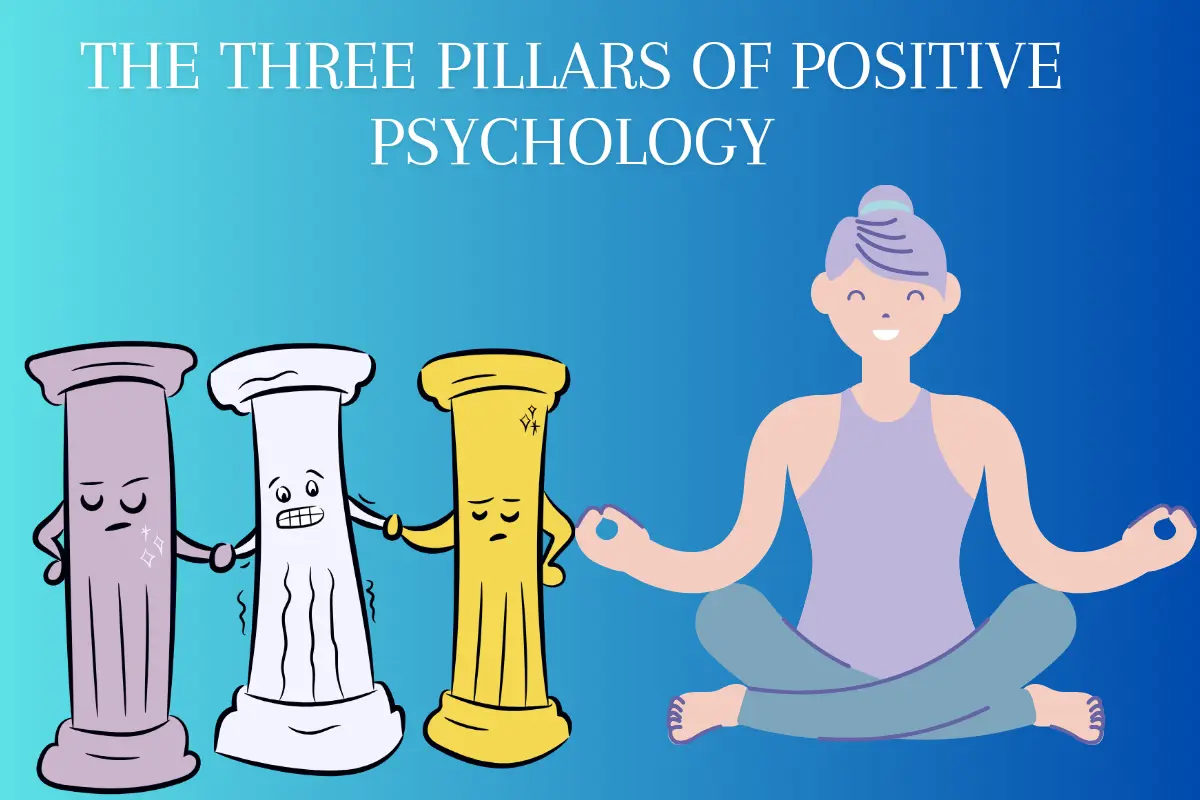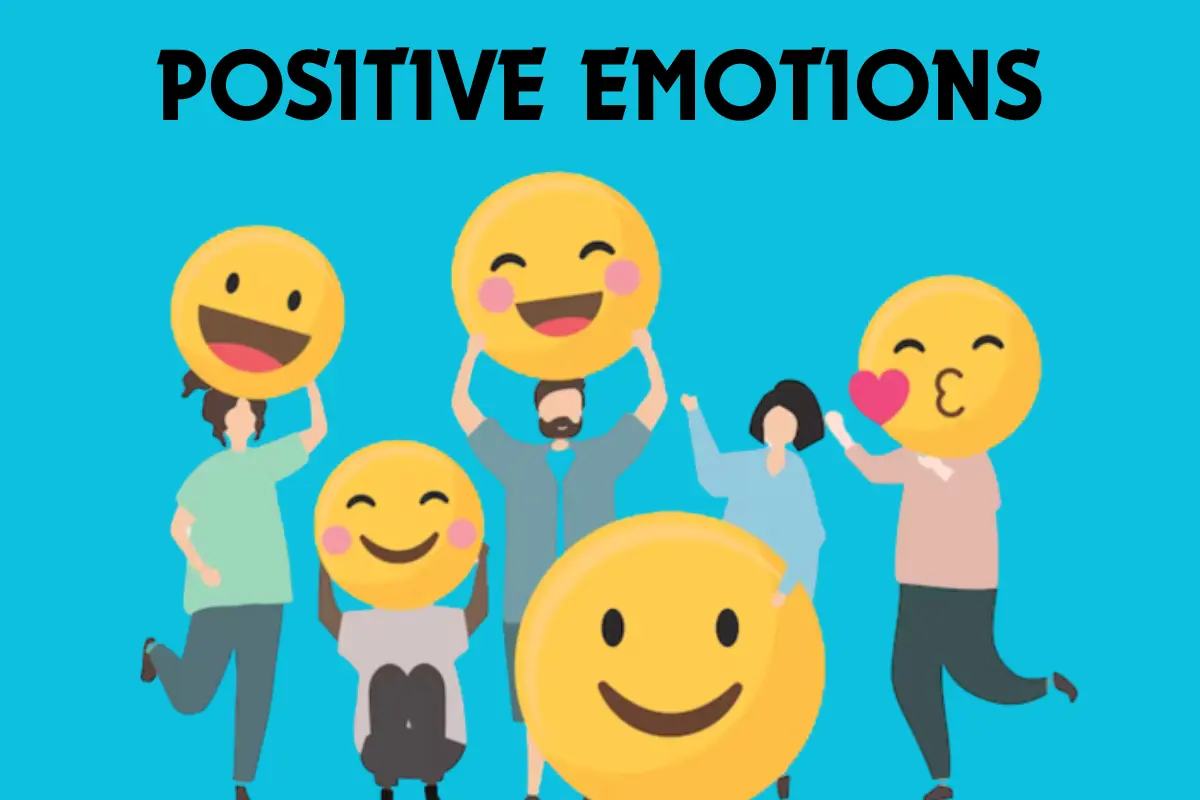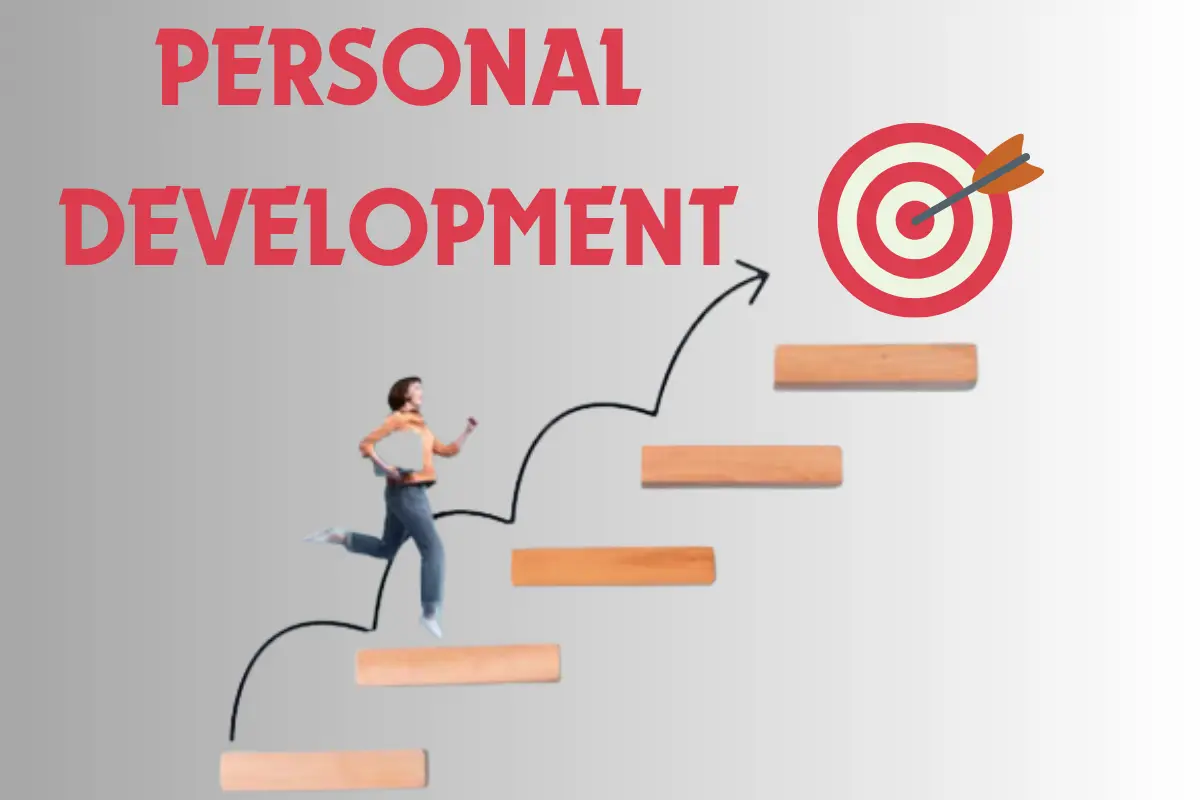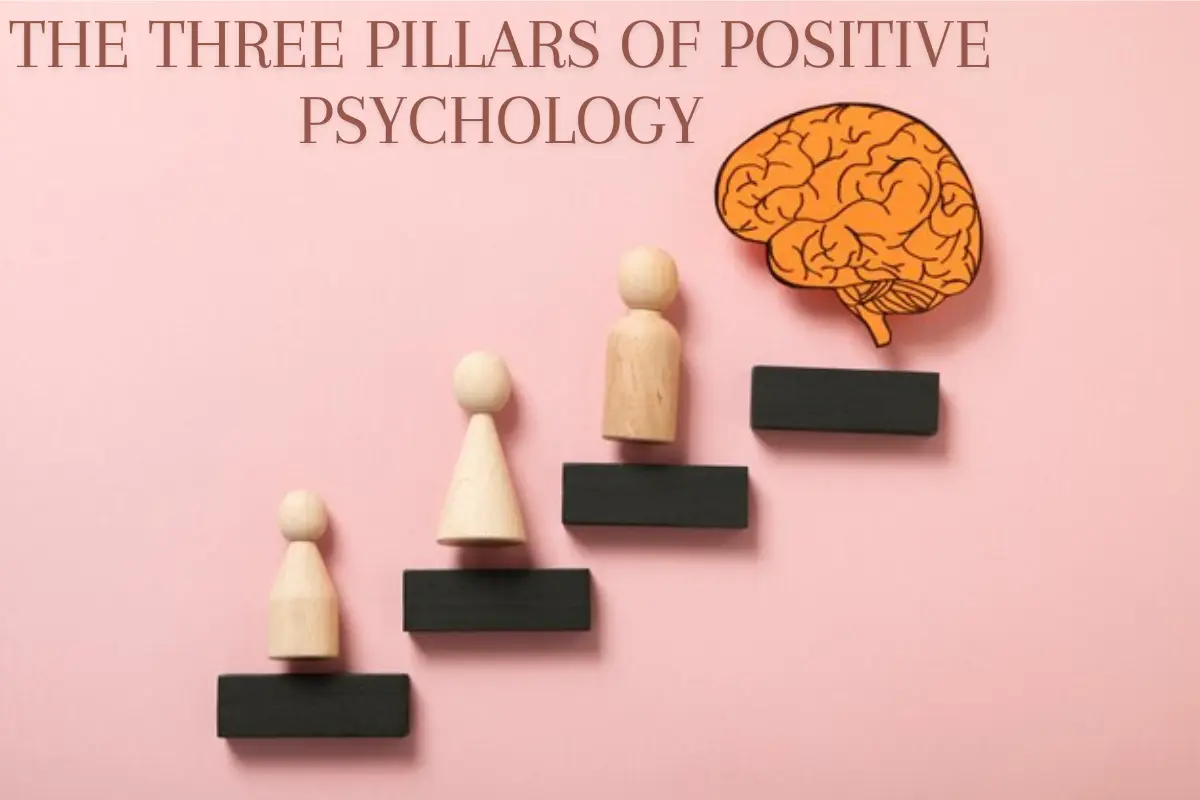Introduction
In the late twentieth century, a booming field of Positive Psychology appeared that aimed at studying human happiness and well-being. Three key pillars underpin Positive Psychology, acting as massive columns that support the framework of a happy life. In this study, we will explore these basic principles and reveal their significance, theoretical basis, practical implications. By deepening the understanding of these pillars, we embarked on a transformative journey towards a happier more meaningful and purposeful life. We will now proceed on our voyage through the world of three positive psychology pillars.

Here are the three pillars of positive psychology in more detail:
- Positive Emotion: Cultivating Happiness and Positive Feelings.
- Engagement (flow): immersion in enjoyable activities.
- Meaning and Purpose: Personal values and meaning in life.
1. Positive Emotions:
This pillar is about savoring and nurturing positive emotions in our everyday lives. The positive emotions are joy, gratitude, love, satisfaction and hope. Through deliberate pursuit and enjoyment of positive events, gratitude practice as well as fostering supportive relationships we can increase our overall life quality.
Embracing Gratitude:
1. Gratitude Exercises: Instead, try writing down your gratitude daily or weekly by listing three things you are thankful for. This exercise can help you focus on the positive aspects of life.
2. Benefits of Gratitude: Benefits of gratitude Research has shown that practicing gratitude can increase mood, reduce stress and enhance overall well-being. It may lead to even better sleep and healthier relationships.

The pursuit of happiness:
1. The Science of Happiness: As a positive psychology research shows, we have 40% of power over what makes us happy. Happiness is determined by a number of factors such as nature, nurture and choice.
2. Positive Emotions Activities: Engage in activities that bring you joy, including hobbies, exercise, spending time with family members or pursuing your interests.
Fostering positive connections:
1. Social Connection: One of the most important elements in happiness is maintaining healthy relationships. Promote relationships with your friends, families and local population. Focus on open communication and quality time.
2. Building Meaningful Relationships: Use supportive, empathetic and active listening behaviors. Meaningful relationships shape a person’s sense of purpose and belonging.
2. Engagement
Engagement is defined as being deep in an activity or experience. It is often referred to as being “in the zone” or a flow state. When we undertake tasks that stretch our abilities and offer a sense of meaning, time appears to speed up, and we experience profound satisfaction. It can be anything, including engaging in a hobby, playing sports or doing creative work.
The Flow State:
1. What is flow? The flow is a state of mind when you are completely absorbed in the process, forgetting about time and yourself. It often occurs when you are presented with a task that is within your reach.
2. Achieving Flow: Entering the Flow Select interests that meet your passions and complement your strengths. In order to experience flow, ensure that your objectives are explicit and focus on these activities exclusively.
Talents and strengths:
1. Finding Your Talents: Using tools such as the VIA Character Strengths survey, you can discover your personal strengths. Identify your strengths and think about how you might apply these qualities in other areas of life.
2. Alignment with Talents: In compliance with the Talents Find positions in your field, hobbies or volunteer activities that highlight your talents. This congruence increases satisfaction and engagement.

Finding Purpose:
1. The Value of Purpose: A sense of purpose gives life meaning and direction. It motivates you to achieve meaningful goals.
2. How to Find Your Purpose: Consider what is most valuable to you. Consider your values, passions and what you want to bring into this world. Your objective could evolve with time.
3. Meaning and Purpose:
This pillar is about finding a sense of meaning and purpose in our lives. It includes determining our central values, knowing what is most important to us and making sure that we live by those values through the actions and goals. When we have a well-defined purpose, either through meaningful relationships, acting for the benefit of others or having an enjoyable career then life satisfaction and fulfillment are more likely to be achieved.
Meaningful Objectives
1. Setting Meaningful Goals: Develop realistic, achievable goals that reflect your purpose and are aligned with your values. These goals make sense of your life.
2. Intentions vs. Goals: Intention is focused on the “how” of achieving those goals, whereas goal refers to outcomes that are specific and measurable. For a comprehensive approach, strike the balance between both.
Finding Purpose:
1. The Value of Purpose: A feeling of purpose gives life direction and significance. It inspires you to work towards worthwhile objectives.
2. How to Find Your Purpose: Think about what is most important to you. Think about your principles, interests, and the contribution you wish to make to the world. Your goal may change over time.
Service and contribution:
1. The Power of Giving Back: By helping others, you not only make their lives better, but you also feel deeply fulfilled and that your life has purpose.
2. Kindness: Volunteer, give, or just be helpful to others on a regular basis. Small acts of generosity can make a great difference.
Personal Development
1. Continuous Self-Improvement: Support personal growth and lifelong learning. Adversity and difficulties present chances for development and self-discovery.
2. Overcoming Obstacles: The secret to surmounting difficulties is resilience. To handle the ups and downs of life, cultivate coping mechanisms and a growth mentality.
By focusing on these three pillars, we can cultivate a positive mindset, enhance our well-being, and lead a more fulfilling life.

Critiques and Challenges
Critical Perspectives on Positive Psychology
1. Overemphasis on Positivity: For example, critics say about positive psychology that it concentrates too much on good things while forgetting about bad ones.
2. Cultural Bias: However, some people argue that the concepts and procedures of positive psychology may be culture-bound. Their main objection appears to be related to the possibility of different approaches to culture in understanding well-being or happiness.
3. Lack of Depth: The critics argue that there might not be enough depth within the discipline regarding comprehension of complicated human experiences, which sometimes tend to simplify human issues such as psychological phenomena and suffering.
4. Commercialization: Positive psychologists have raised issues regarding its use commercially by some who view it as a marketable industry promoting self-help products as well as paid interventions in order to benefit economically.
5. Ethical Concerns: There may be ethical problems when interventions concerning positive psychology are done, ignoring autonomy, and if they are employed as a way to control the feelings and conduct of people.
6. Positive Psychology as a Panacea: Others believe that positive psychology is not a cure-all for every problem in psychology, and it should not supplant conventional psychology’s concentration on diagnosing and treating psychiatric illnesses.
7. Scientific Rigor: There are those who can be skeptical about some studies in positive psychology based on their opinion that the field sometimes relies on mere stories and not necessarily strong research methods based on science.
However, even though these perspectives are vital, positive psychology has contributed greatly towards understanding human wellbeing and resilience. However, the fact that the field has continued to develop and seek to answer some of these criticisms is a plus that contributes towards expanding its impact in mainstream psychology.
Ethical and cultural considerations
1. Cultural relativism in well-being
- State the significance of acknowledging cultural differences when deciding what constitutes health.
- Outline how cultural values and norms can influence people’s definitions of happiness and positive feelings.
2. Universal vs. Culturally Specific Approaches
- Evaluate the middle ground that is available in positive psychology, taking into consideration culture-specific approaches.
- Cite some instances where some positive psychological interventions do not work for all people under similar circumstances.
3. Ethical Guidelines in Positive Psychology
- The ethical implications of research as well as the application of evidence-based positive psychology interventions.
- Stress on the significance of honouring autonomy and an individual’s well-being in pursuit of happiness.
4. Cultural Competency in Practice
- Why is cultural competence important for positive psychologists?
- Give suggestions to professionals on how interventions can be adjusted in line with cultural diversities.
5. Potential for misappropriation
- Resolve issues with regard to how positive psychology is being hijacked by marketing.
- Talk about positive psychology appropriateness, responsibilities, and ethics as applied specifically to marketing industries, industries that sell self-help, industries that use positive psychology in advertisements, and other contexts.
6. Critical Perspectives on Cultural Bias
- Provide critical points of view, questioning the possible bias of the positivist approach inherent to positive psychology researchers and practitioners.
7. Balancing Ethical Principles
- Examine the difficulty of advancing wellness and ethical standards, particularly in multicultural environments.
8. Ethical and cultural considerations in research and practice
- Underline the progressing function of moral and sociological criteria in the shape of positive psychology research and practice.
Three Pillars Of positive psychology vedio tutorial:
https://youtu.be/E07DguRmU8U?si=AyCnFf4I1MPYMWjr
Conclusion:
The three pillars of positive psychology—positive emotion, engagement, and meaning—form the foundation for a happier and more fulfilling life. By nurturing positive feelings, immersing ourselves in meaningful activities, and pursuing a sense of purpose, we unlock the keys to lasting well-being and contentment. Embrace these pillars, and they will lead you towards a brighter, more meaningful future.
FAQs
Who proposed 3 pillars of positive psychology?
The three pillars of positive psychology were proposed by Martin Seligman, a prominent psychologist.
Why are the three pillars of positive psychology important?
The three pillars of positive psychology (positive emotions, positive traits, and positive institutions) are important because they focus on promoting well-being and flourishing.
What are the two great pillars of psychology?
The two great pillars of psychology are the study of behavior and the study of the mind.
What are the three types of happiness?
The three types of happiness are hedonic happiness (pleasure and enjoyment), eudaimonic happiness (meaning and purpose), and social happiness (relationships and connections).
